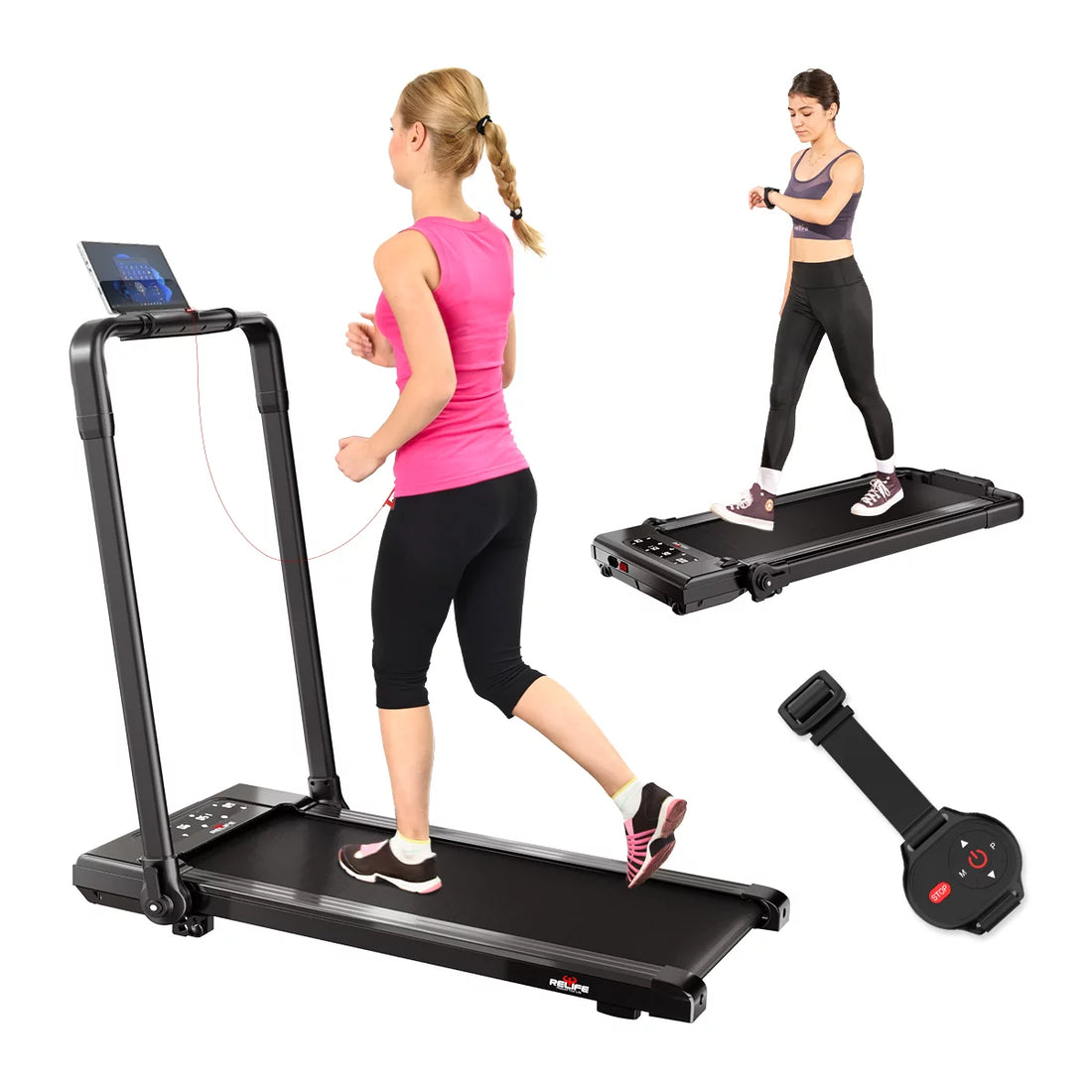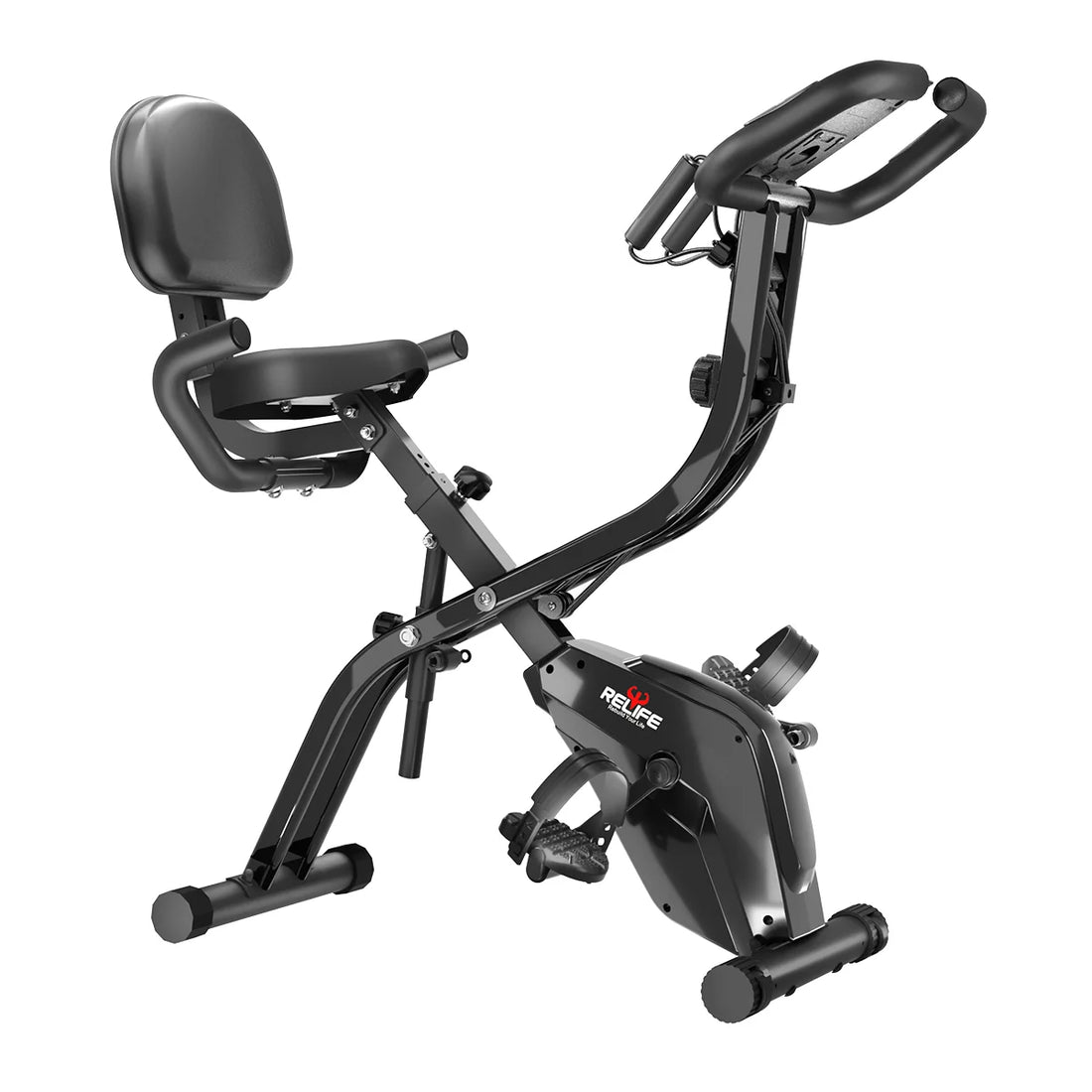The content of the article:
1.Exercise Bike Training Program
2.Training Intensity
3.Recommendations for Exercising on an Exercise Bike
4.Effectiveness
5.The Benefits and Harms of an Exercise Bike
6.Benefits
7.Harms
Everyone knows that the best way to quickly lose weight is to do cardio. However, just coming to the gym and starting to exercise on exercise machines is not enough; you need to know how to use them correctly, how often you should exercise and what load to give yourself.
The benefits of an exercise bike among all cardio equipment are undeniable. An exercise bike is the same as a bicycle, but it is located indoors and attached to the floor.
When exercising on an exercise bike, you work the same muscles as when riding a bicycle, but the differences are that the exercise bike has no wheels, the handlebar is static, and the legs are attached with special belts. An exercise bike not only allows you to correct your shape, but also gives a person more endurance.
We will find out further what are the benefits of an exercise bike and what are the dangers of exercising on it.

1.EXERCISE BIKE TRAINING PROGRAM
Whatever you start doing, it is important to know when to stop everything and to sensibly assess your strengths and capabilities. The same rule applies to exercise on an exercise bike.
The training program for an exercise bike must be well-designed and take into account the physical fitness of the student.
2.TRAINING INTENSITY
For beginners:
If you have never visited a gym before and generally have not played sports, then a thirty-minute lesson 4 times a week will be enough for you. Incorporating a foldable exercise bike into your routine can provide a convenient way to start your fitness journey at home.

Average course:
If you have passed the initial stage and trained for about 8 weeks, 4 times a week for 30 minutes, you can proceed to the next stage. Now you can reduce your workouts per week to 3-5 times, but you should increase your workout time to 45 minutes.
Utilizing the best folding exercise bike can help you maintain consistency and progress in your fitness routine.

Advanced course:
If you are familiar with sports and just decided to resume training after a short break, then this level is for you. Increase your exercise time on the exercise bike to 60 minutes 5-6 times a week. This intensity of exercise will allow you to regain your shape, provide the physical activity you need and, as a result, increase muscle mass. Investing in a 3 in 1 exercise bike can offer versatility and challenge as you progress to this advanced level of training.

3.RECOMMENDATIONS FOR EXERCISING ON AN EXERCISE BIKE

When embarking on a training program with an exercise bike, it’s essential to adhere to certain guidelines to ensure a safe and effective workout experience.
1. Monitor Proper Breathing:
Pay close attention to your breathing technique during your workout sessions. Optimal breathing involves inhaling through the nose and exhaling through the mouth. This allows for better oxygen uptake and helps maintain a steady rhythm throughout your workout. Incorporating controlled breathing can enhance your endurance and overall performance on the exercise bike for home.

2.Perform Smooth and Measured Movements:
Avoid jerky or sudden movements while cycling. Instead, focus on executing each pedaling motion smoothly and evenly. Abruptly interrupting or stopping can strain your muscles and disrupt your workout flow.
Gradually build up your pace and resistance levels to avoid overexertion and injury.
3.Cool Down After Each Session:
At the conclusion of your workout, take time to cool down properly. This involves cycling at a slower pace to gradually lower your heart rate and allow your body to transition from exercise mode to a state of relaxation.
Cooling down aids in reducing muscle soreness, promoting recovery, and preventing post-exercise dizziness or lightheadedness.
Consider investing in a foldable exercise bike for convenient post-workout storage and cooling down at home.
4.Warm Up Before Starting:
Prior to beginning your exercise bike session, engage in a brief warm-up routine to prepare your body for the workout ahead. Perform dynamic movements such as squats, lunges, and arm circles to increase blood flow to your muscles, loosen tight joints, and enhance flexibility.
Incorporating warm-up exercises helps prevent injury and ensures optimal performance during your workout session.
5.Choose Comfortable Clothing and Footwear:
Selecting appropriate attire for your workout is crucial for comfort and performance. Opt for breathable, moisture-wicking fabrics that allow for unrestricted movement and help regulate body temperature. Avoid clothing that is too tight or restrictive, as it may impede your range of motion. Additionally, ensure you wear supportive footwear that provides stability and traction on the exercise bike. Avoid exercising barefoot to minimize the risk of injury, as loose fabric could potentially become entangled in the bike’s mechanism.
4.EFFECTIVENESS
The effectiveness of workouts on an exercise bike varies from individual to individual, contingent upon personal goals and desired outcomes from regular training.
Whether aiming to shed excess weight or improve cardiovascular health, understanding how to optimize exercise duration and intensity is key.
If weight loss is your primary objective, maintaining a moderate intensity workout for approximately 40 minutes is recommended.
By exercising at a moderate intensity level, your heart rate should remain within 75% of its maximum capacity. Incorporating a foldable exercise bike into your routine offers the flexibility to engage in longer duration workouts at home, contributing to your weight loss goals effectively.
To gauge and monitor the effectiveness of your training regimen, keeping a detailed record of your progress is essential. Maintaining a separate diary or notebook allows you to track key indicators, assess your performance, and identify areas for improvement. Record the following metrics to evaluate the efficacy of your workouts :
*Post-Training Feelings: Note how you feel after each workout session, including any sensations of fatigue, soreness, or invigoration. Pay attention to changes in energy levels and mood to gauge the impact of your exercise routine on overall well-being.
*In-Training Sensations: Monitor your experiences during exercise, such as fluctuations in breathing patterns and instances of dizziness or lightheadedness. Maintaining awareness of these sensations helps ensure safe and effective workouts while cycling on the exercise bike.
*Caloric Expenditure: Track the number of calories burned during each workout session to assess the impact on your weight loss goals. Many exercise bikes for home come equipped with digital displays that estimate calorie expenditure based on workout intensity and duration, providing valuable feedback for monitoring progress.
By diligently documenting these factors, you can gain valuable insights into the effectiveness of your exercise routine and make informed adjustments as needed. Whether striving for weight loss, improved fitness, or enhanced well-being, maintaining consistency and self-awareness are key components of achieving success with exercise bike workouts.</span>
5.BENEFITS AND HARMS OF EXERCISE BIKE

The benefits of incorporating an exercise bike into your fitness routine are plentiful, offering many advantages for both physical and mental well-being.
However, it’s important to be mindful of potential risks and limitations associated with this form of exercise.
6. Benefits of Exercise Bike:
1)Improved Endurance: Regular exercise on an exercise bike significantly enhances overall endurance, strengthening the body and increasing resilience to stressors. By engaging in consistent workouts, individuals experience heightened stamina and vitality, contributing to enhanced performance in daily activities.
2)Targeted Muscle Training: The exercise bike effectively tones and shapes the hips and abdomen through targeted muscle engagement. Its focused workout regimen allows for precise correction of the hip area, resulting in improved muscle definition and a more sculpted physique.
3)Stress Reduction and Emotional Well-being: Cycling on an exercise bike at a moderate pace, accompanied by favorite music, is a therapeutic outlet for stress relief and emotional release. This activity promotes relaxation, tranquility, and mental clarity, fostering a sense of calmness and balance within the nervous system.
4)Joint-Friendly Exercise: Unlike high-impact activities such as running on a treadmill, the exercise bike offers a gentler alternative with reduced strain on the ankle and knee joints. This lower risk of injury makes it an ideal choice for individuals seeking effective cardiovascular exercise without compromising joint health.
5)Enhanced Joint Mobility and Posture: Regular exercise on an exercise bike improves joint mobility and promotes a refined, feminine figure. Additionally, the proper engagement of back and leg muscles during cycling positively impacts posture, strengthening the body’s resilience to minor injuries and enhancing overall stability.
6)Cardiovascular and Respiratory Health: Exercise bike workouts strengthen the heart and positively influence the functioning of the circulatory and respiratory systems. Consistent cardiovascular exercise enhances heart health, promotes efficient blood circulation, and boosts lung capacity, contributing to overall cardiovascular fitness.
7)Caloric Expenditure and Weight Management: Cycling on an exercise bike is an effective strategy for weight loss, as it facilitates the burning of excess calories through sustained physical activity. Modern exercise bikes often feature built-in calorie trackers, allowing users to monitor their energy expenditure and progress towards weight loss goals.
Harms and Limitations
While the benefits of exercising on an exercise bike are substantial, it’s crucial to acknowledge potential limitations and contraindications associated with this form of exercise.
Individuals with pre-existing health conditions or injuries should consult a healthcare professional before beginning an exercise bike regimen to ensure safety and appropriateness for their specific needs.
By recognizing both the advantages and potential risks of exercise bike workouts, individuals can make informed decisions and maximize the benefits of this versatile fitness tool while minimizing potential harm.
7. Harm of an Exercise Bike:
While exercise bike workouts offer numerous benefits for physical fitness and well-being, it’s important to recognize potential risks and limitations, particularly for individuals with certain health conditions or injuries.
Understanding these factors is crucial for ensuring a safe and effective exercise regimen.
Contraindications and Health Considerations:
*Pre-existing Conditions:
Individuals with specific injuries or chronic diseases, such as tachycardia, asthma, or heart failure, may be at risk of experiencing negative outcomes from exercise bike workouts.
It’s important to consult with a healthcare professional before beginning any new exercise program to assess suitability and determine appropriate modifications.
*Infectious Diseases:
Exercising on an exercise bike is not advisable when experiencing a cold or acute infectious illness. High temperatures, fever, and general malaise indicate the body’s need for rest and recovery, making strenuous physical activity ill-advised during such times.
Neglecting to prioritize rest and recovery can exacerbate symptoms and prolong illness duration.

Risks of Improper Training

1.Inappropriate Load Levels: Training intensity should align with individual physical capabilities to avoid overexertion and potential injury. Attempting overly complex or strenuous workouts beyond one’s current fitness level can lead to exhaustion, lethargy, and fatigue. Gradually progressing workout intensity ensures sustainable improvements in fitness while minimizing the risk of adverse effects.
2.Overloading the Body: Excessive strain on the body from intense or prolonged exercise sessions can result in physical exhaustion and strain. Overloading muscles, tendons, and ligaments increases the risk of injury, including sprains and strains. It’s essential to listen to your body’s signals and adjust workout intensity accordingly to prevent overexertion and promote safe, effective training.
Responsible Approach to Exercise
While the exercise bike itself poses minimal risk when used appropriately, it’s essential for individuals of all genders to adopt a responsible approach to their health and fitness.
Prioritizing personal capabilities, listening to one’s body, and seeking guidance from healthcare professionals as needed are fundamental principles for safe and effective exercise participation.
By acknowledging potential risks, adhering to appropriate training protocols, and prioritizing individual health needs, individuals can enjoy the benefits of exercise bike workouts while minimizing the likelihood of adverse outcomes.
Remember, safety and moderation are key principles for achieving sustainable fitness and well-being.


















